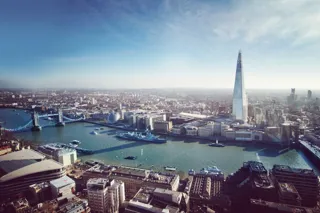Transport for London (TfL) is promising to unlock land for last-mile delivery companies to help operators adapt to the ultra-low emission zone (ULEZ).
It also wants to work with suppliers to increase click and collect services, while also developing greater use of delivery lockers. The measures are expected to be included in a new freight and servicing action plan, due to be published by TfL in March.
London’s transport authority has also promised to publish separate guidance for the capital’s 33 borough councils around zero emission zones.
Speaking ahead of the publication of the freight and servicing action plan, TfL director of city planning Alex Williams said: “What we want to look at is how the industry can be more efficient, how can it be safer, how can it be cleaner and how we can support it with accessing the appropriate land.”
DPD is showing what’s possible after opening its first all-electric last mile delivery depot in Westminster (commercialfleet.org, October 19, 2018). The 5,000sq ft facility can deliver 2,000 parcels a day, utilising an all-electric fleet.
Two all-electric Mitsubishi Fuso eCanter 7.5t vehicles will feed parcels into the depot each day, while the final mile deliveries will initially be completed by 10 Nissan eNV200 all-electric vans.
Capable of making 120 stops a day, they will be joined by eight micro-vehicles from Norwegian manufacturer Paxster – with a further 23 on order.
The Paxsters are delivering to the immediate area around the depot and are expected to operate 60 stops on one charge per day.
DPD has invested more than £500,000 refurbishing the site, including the introduction of a new electric charging system that will enable the deployment of electric vehicles without major infrastructure upgrades.
However, Rob Fowler, general manager, CSR and technical planning at DPD Group UK, told the London Assembly transport committee that establishing the new depot had not been easy.
Appearing alongside Williams, he said: “There were a number of challenges around vehicle supply, EV infrastructure and securing a location to operate from.”
SIGNIFICANT INVESTMENT
DPD’s investment in Westminster equates to £3 million over 10 years just in capital cost before any management or headcount costs. Locating a delivery operation in the heart of the capital is becoming more difficult, according to Fowler.
Land earmarked for use by industry in London, so-called V8 space, is at a premium. Between 2001 and 2015, 1,300 hectares of industrial land was lost and just 64% of it is protected today.
DPD was forced to move from its most productive depot, a 1.5-acre site next to Kings Cross station, when it was sold for in excess of £35m. “The logistics industry just cannot compete with that price point,” said Fowler.
Williams acknowledged that TfL needed to look at how it can use its land more efficiently and prioritise its use for V8 and freight.
He suggested that, as with DPD’s Westminster location, which was originally home to the chauffeur-driven car of a former TfL MD, there is “plenty of scope” for similar spaces, such as underused car parks and some of its own bus depots.
He said: “I think that one of the challenges of the (freight and servicing action) plan is to see how we can unlock more of these sites for DPD and other companies.”
AIR QUALITY RESTRICTIONS
DPD, like other commercial fleet operators in the capital, will have to comply with ULEZ air quality standards or face a daily charge, when it takes effect from April 8.
Drivers not using a compliant van (Euro 4 petrol and Euro 6 diesel) in the zone will need to pay a daily ULEZ charge of £12.50, 24 hours a day, 365 days a year. Buses, coaches and lorries will need to meet the Euro VI standard or pay £100 a day.
DPD is better placed to respond to the ULEZ than most van operators; it buys 1,000 Euro 6 vehicles a year and will manipulate its fleet to ensure compliant vehicles are in the right place.
However, of greater concern to DPD and the Freight Transport Association (FTA) are further air quality restrictions being introduced at a borough level in London.
Natalie Chapman, head of urban policy at the FTA, told the transport committee that fleets face a “fragmentation of regulation”.
Hackney, for example, has introduced a zero emission zone in Shoreditch, while the City of London is considering an emission-free zone.
Fowler said that the Government’s clean air strategy provided a framework that local authorities should follow.
“We will have a significant problem if there are six different standards across six different boroughs,” he explained. “Fleet procurement on that basis is phenomenally difficult.
“You have to be pragmatic about what the industry can do and what manufacturers can achieve.”
GUIDANCE PUBLISHED
Williams revealed that TfL will be publishing guidance for borough councils on zero emission zones in the spring to enable them to plan in a “more consistent” way, with earlier engagement with the freight industry.
However, he admitted: “The definition of zones is a decision for the local highways authority to make, so if Hackney chooses to make its streets entirely zero emission, with very strict standards, that is its decision.”
The FTA is calling for a freight commissioner in the same way the capital has a walking and cycling commissioner and a night-time commissioner.
Highlighting how TfL’s freight team had been disbanded, with freight now “spread across the organisation”, Chapman said: “We need to see more leadership on freight.”
























Jim Perry - 10/05/2019 08:32
There is possibly good news for these types of companies about to invest in EV Infrastructure.The governments ( BEIS & OLEV ) Vehicle to Grid charging trial are looking for last mile delivery companies specifically within the ULEZ area to participate in the trial.Nissan and E.ON are leading the project.jim.perry@dekra.com